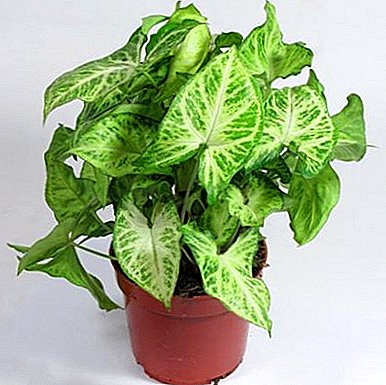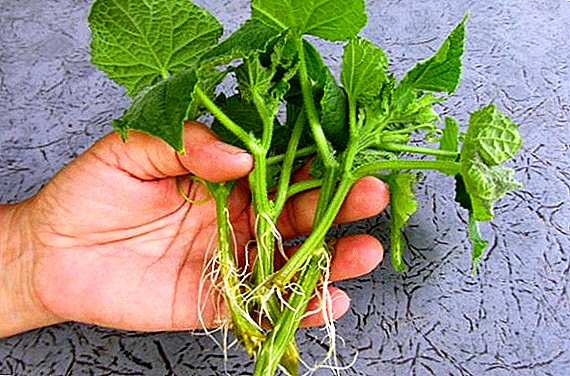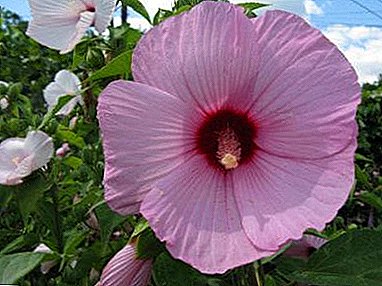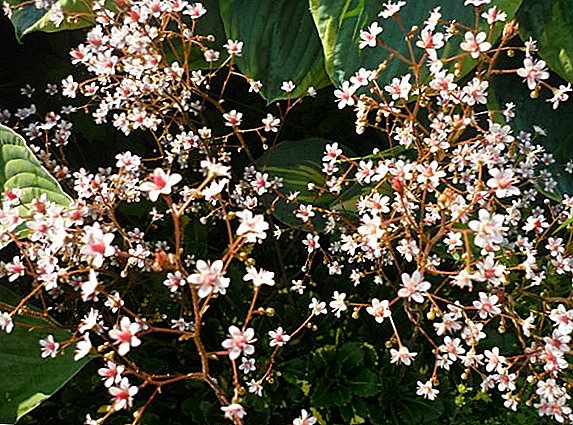
Syngonium It belongs to the family of Aroids. In nature, you can find about thirty of its varieties, and in indoor conditions it is customary to grow only two or three species.
You will learn all about Singonium later in the article.
general description
Potted flowers Syngonium They are a grassy creeper with thin stems from which air roots grow, capable of clinging to any support. For young plants is characterized by the presence of whole arrow-shaped leaves of bright color, which can be both variegated and monophonic. Sometimes the leaves are covered with silver streaks, spots and strokes. Their color ranges from various shades of green to whitish.
As they grow older, the leaves of syngonium are dissected into several lobes, the number of which can vary from three to seven.
The flowers of this plant are a green cob with a red or pink bract that resembles a veil. But at home singonium almost never blooms.
IMPORTANT! Inside the syngonium is milk juice, which is poisonous. If it gets on the mucous membrane, it leads to irritation. Therefore, this plant should be kept out of reach of pets and small children.
A photo
See below: syngonium flower photo with proper home care




Homeland plants
In nature, singonium can be found in tropical forests located in the southern and central regions of America, as well as in Cuba and Jamaica. This vine is the closest relative of philodendron.
Kinds
Let us consider in more detail: syngonium species with photos
Pintail
Syngonium knife-list - This is a branched vine with a thin stem. His homeland is Central America. This plant became the ancestor of some varieties of indoor syngonium. Its leaves are located on the elongated petioles, for which he got its name.
In youth, this plant is characterized by dark green arrow-shaped leaves, and over time they become lighter and dissected. In a year this plant adds in height from forty five to sixty centimeters.
There are such varieties of a knife-netted syngonium:
- "Arrow" - unpretentious in the care of a variegated flower that grows quickly
- "Pixie" - dwarf flower with variegated leaves
- "White Butterfly" is a fast-growing cultivar with large leaves that can reach a meter and a half in height.
The plant is not particularly demanding and is capable of reproduction throughout the year.

Auriculate
Usonic syngonium is also called aloof. It is characterized by long branches, the thickness of which is two centimeters. In the interstices the formation of air roots occurs. For the year, this plant can increase in height from seventy to ninety centimeters, and its average height is one hundred eighty centimeters.
The leaves at the ear-shaped Syngonium are shiny and green. With age, they change their shape. In the youth of the plant, they resemble the arrowhead, and then begin to split into three or five parts. At the base of the leaves are equipped with two segments that resemble ears.

Home care
Singonium care at home requires special. If you decide to start a syngonium at home, buy it only in verified places. Buying a plant from your hands, you risk not getting the kind and variety that you would like.
Having brought the syngonium home, immediately determine the place for its placement. Best of all, if it is a table in the middle of the room. Do not forget to put a special support for the plant.
The role of support can also be played by such plants as ficus, dieffenbachia or aglaonema. The syngonium will treat them quite friendly and can create a nice composition with them. You can also grow syngonium as an ampelous plant, placing it in a hanging pots.
Pot with this representative of the flora can not be put:
- On drafts.
- Near appliances centralized heating system.
- In a room with dry air.
Trimming (crown formation)
To give the plant a more bushy shape, you need to regularly prune it. It is a pinching of the apical shoots after the sixth or seventh leaf.
IMPORTANT! Trimming must be done with gloves!
Watering
For watering this flower should take soft water, which should stand for three to five days. In the warm season, watering should be done immediately after the topsoil dries out, and spraying leaves can be done daily.
IMPORTANT! Be sure to pour excess water from the pot tray, not allowing it to stand.
In the cold season, it is recommended to water the syngonium a couple of days after the top tier of the soil in the pot dries.
Landing
For planting this creeper, you can choose any pot but it is advisable not to plant it in a bonsainist, in which the width significantly exceeds the depth. The dimensions of the pot should correspond to the size of the root system.
The plant will feel great in light nutrient soil. If you want to plant syngonium in a heavy substrate, add fine claydite or perlite there, which will add lightness to the earth.
Transfer
 If you purchased the syngonium in a store, try it. transplant in a new pot for seven days. A young plant needs to be transplanted immediately after it has taken root in a pot. Later transplant the plant in any of the spring months every two years.
If you purchased the syngonium in a store, try it. transplant in a new pot for seven days. A young plant needs to be transplanted immediately after it has taken root in a pot. Later transplant the plant in any of the spring months every two years.
You can make a soil mix for the transplantation of syngonium yourself. To do this, you will need sheet and woody soil, sand and peat. All these ingredients must be combined in equal parts and fluff. In a pot, the ground should be airy and not glued together.
In order for your flower to become beautiful, it will need support. To begin, put a drainage pot on the bottom, and add one third of the soil on top. After that, place a support in the center of the pot and fasten it. Place a plant nearby, align its roots and fill the rest of the pot into the pot. After transplanting, immediately water the flower, but do not fertilize it for at least two weeks.
Growing from seed
If you decide to grow syngonium from seeds, they must first be soaked in warm water for twelve hours. Then they are sown in a mixture of two and a half parts of hardwood, one part of humus, one part of peat and one part of sand. In order for the seeds to ascend, the temperature in the room where the container with them is located must be at the level of twenty-five degrees of heat.
It should be noted that the cultivation of syngonium from seeds is a rather complicated process, which is far from always crowned with success.
Reproduction at home
 Reproduction of Syngonium made lead cuttings and apical shoots.
Reproduction of Syngonium made lead cuttings and apical shoots.
Reproduction by cuttings It consists in cutting the stem into segments that contain two or three internode nodes. The outer edge of the cut is powdered with crushed coal or ash.
Cuttings are placed in a container filled with water to form aerial roots. To maintain an optimum level of humidity, you can cover them with cellophane. Do not forget to air cuttings two or three times a day. After the roots appear, plant the cuttings in the prepared soil.
For reproduction of syngonium apical shoots it is necessary to cut off the top of the shoot under the node of the internode so that it contains two or three additional roots. Put the escape in the settled water and do not forget to change it every day. When young roots appear and grow to at least three centimeters, the shoot should be planted in a pot filled with universal soil for indoor flowers.
ATTENTION! To speed up the process of reproduction of syngonium, it should occur at a temperature of twenty-three degrees above zero.
Temperature
When the plant is in the growing season, the optimum temperature for it is eighteen to twenty-four degrees Celsius. In winter, it must be kept in a cool room, the temperature of which is at the level of sixteen or eighteen degrees Celsius.
Lighting
If you decide to place a pot of lianas on the windowsill, it should be the windowsill of the east, west or north window. On the south window, the plant will be bad, as it does not like direct sunlight. Excessive illumination leads to blanching of the leaves, which significantly reduces the attractiveness of syngonium.
Benefit and harm
Syngonium is not only an elegant decoration of your home, but also brings certain benefits. This plant fills the house with positive energy and makes people living in it grow and change for the better.
Flower horoscope says that this type of creeper is useful to have in the house for those people who are endowed with complexes. Liana awakens in people curiosity and desire to expand horizons, contributes to the formation of solid character and self-confidence.
From a medical point of view, the singonium is not endowed with any special healing properties, but it was noticed that its presence in the house has a beneficial effect on the functioning of the organs of the digestive tract.
The harm of this plant lies in the toxicity of its juice, but if you take the necessary precautions when handling it, then you have nothing to fear.
IMPORTANT! If singonium juice gets on the skin, immediately rinse it off with plenty of running water.
Diseases and pests
The most common pests of syngonium are:

Its presence is indicated by yellowing, twisting and dropping of leaves. You can get rid of this pest by spraying the plant "Aktellikom". Processing is desirable to hold twice.
What if the leaves turn yellow?
Why do the leaves turn yellow at Syngonium? The answer to this question is very simple: the leaf of Syngonium turns yellow with a lack of humidity in the air. To correct this situation, often spray the plant with water. In addition, the yellow color of the leaves may be a sign of an insufficient amount of fertilizer in the soil. In this case, you must urgently make feeding.
Syngonium is not a capricious plant, but if you want it to please you as long as possible, follow all the rules of caring for it.












